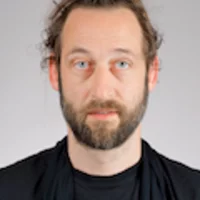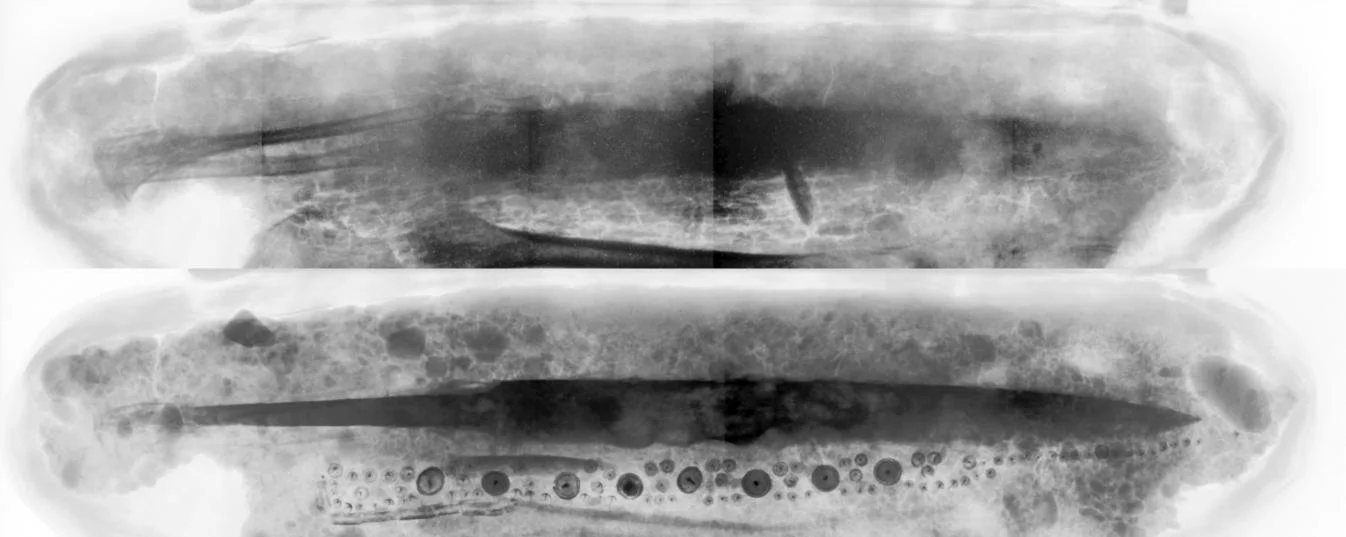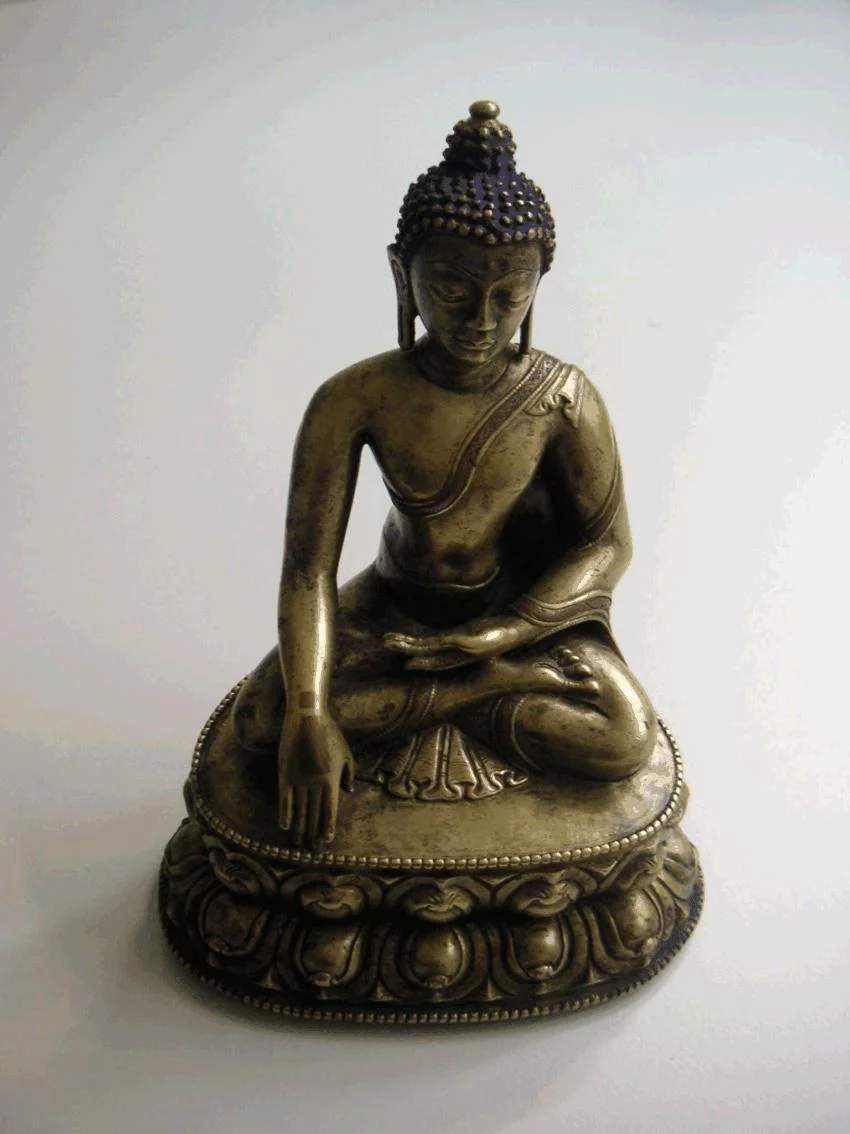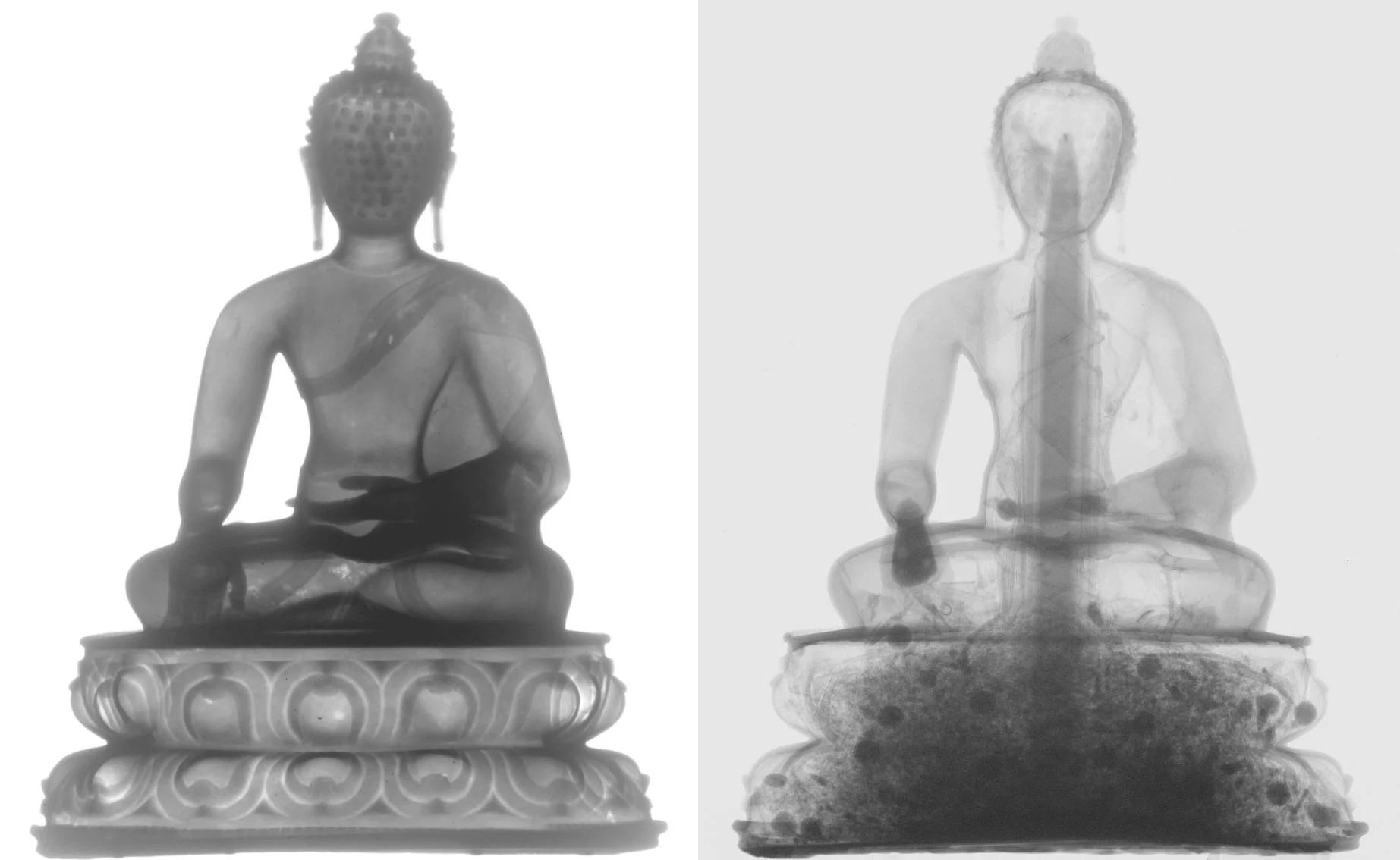Non-destructive and non-invasive investigations of cultural heritage objects can provide new insights and key information about the structure, the content, the provenance, the history and the previous restoration measures of the observed objects. Studies with X-rays have been quite common since years in many museums and dedicated labs [1]. However, there are limitations for X-rays if the transmission or the image contrast does not fit to the sample’s dimensions. Neutrons can provide an alternative technique due to the different contrast mechanism in the interaction with matter. While the contrast with X-rays is strongly increasing towards heavy elements, neutron provides already high attenuation for light elements like hydrogen or boron. Many heavy metallic objects are more transparent with neutrons compared to X-rays. Attenuation properties of X-rays and neutrons are compared here. In this respect, neutron imaging has been established as an alternative in the non-destructive investigation of museums objects. It has been quite useful and interesting to combine X-ray and neutron imaging data, because complementary information can be derived. The example of a block excavation underlines these statements. The NEUTRA facility is equipped with an X-ray source which enables the pixel-wise referenced imaging of objects with neutrons and X-rays as well.
Research Topics
In collaboration with Swiss and European museums and research institutes we performed many research projects by using neutron imaging methods (radiography and tomography), here are some examples:
- Roman bronze sculptures and other metallic samples found in Switzerland [2, 6].
- Renaissance bronzes of the Rijksmuseum Amsterdam [3]
- Coin investigations from Qumran, Israel [4]
- Buddha sculptures and their holy content [5]
- Treatment of wooden objects with resin protective’s [7]
- Treatment of corroded lead by means of electro-chemical methods [8]
Our facilities are available for further and similar studies on demand. Please, contact us for a first trial and feasibility test before a joint project can be started.
Publications
[1] Radiography of Cultural Material.
J. Lang, A. Middleton, (2005)
Elsevier, 2005, ISBN 0 7506 6347 2, 2nd edition.
[2] The complementary use of neutrons and X-rays for the non-destructive investigation of archaeological objects from Swiss collections.
E. Deschler-Erb, E. H. Lehmann, L. Pernet, et al. (2004)
Archaeometry, 46, 4, 647-661.
DOI: 10.1111/j.1475-4754.2004.00180.x
[3] New insights into alloy compositions: Renaissance bronze statuettes by combined neutron imaging and neutron diffraction techniques.
R. v. Lang, J. Jones, G. Burca, W. Kockelmann, S.Y. Zhang, E. Lehmann, M. Estermann, A. Pappot (2011)
Journal of Analytical Atomic Spectrometry, 26, 5, 949-958.
DOI: 10.1039/c0ja00243g
[4] The coin beneath the crust: A pilot study of coins from the mediterann coast of Israel
Adriaens A, Dowsett M, Lehmann E, Farhi Y, Gunneweg J, Bouchenoire L. (2010)
in Holistic Qumran : trans-disciplinary research of Qumran and the Dead Sea Scrolls,
Proc. of Nias-Lorentz Center Qumran Workshop, April 21-25, 2008, Brill, Leiden, ISBN 978-90-04-18152-6
[5] Investigation of the content of ancient Tibetan metallic Buddha statues by means of neutron imaging methods.
E.H. Lehmann, S. Hartmann, M.O. Speidel (2010)
Archaeometry, 52, 3, 416-428.
DOI: 10.1111/j.1475-4754.2009.00488.x
[6] Neutron tomography as a valuable tool for the non-destructive analysis of historical bronze sculptures.
E.H. Lehmann, E. Deschler-Erb, A. Ford, (2010)
Archaeometry, 52, 2, 272–285.
DOI: 10.1111/j.1475-4754.2009.00480.x
[7] Neutron radiography as visualization and quantification method for conservation measures of wood firmness enhancement.
Lehmann E, Hartmann S, Wyer P, (2005)
NUCLEAR INSTRUMENTS & METHODS IN PHYSICS RESEARCH SECTION A-ACCELERATORS SPECTROMETERS DETECTORS AND ASSOCIATED EQUIPMENT, 542, 1-3, 87-94
DOI: 10.1016/j.nima.2005.01.016
[8] Chemical and Morphological Changes of Historical Lead Objects as a Result of the Use of Electrolytic Reduction as a Stabilization Treatment
B. Schotte, A. Adriaens, F. Dhooghe, D. Depla, M. Dierick, M. Dowsett, E. Lehmann, and P. Vontobel (2006)
Analytical Chemistry, 78, 24, 8319-8323.
DOI: 10.1021/ac061381n





